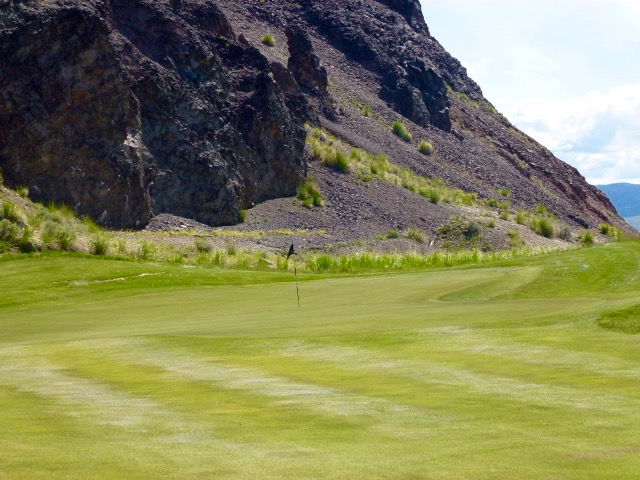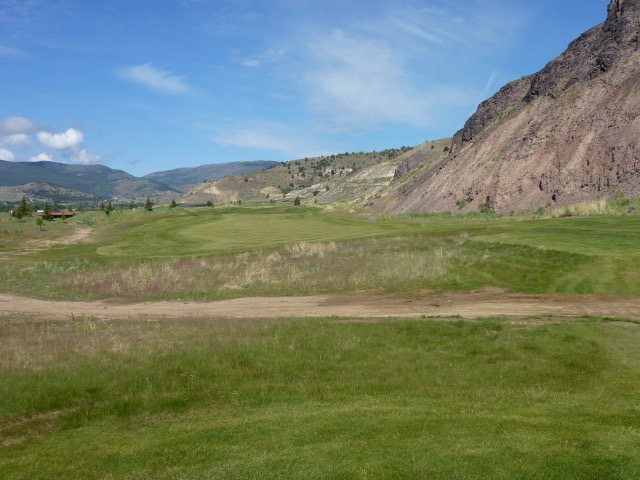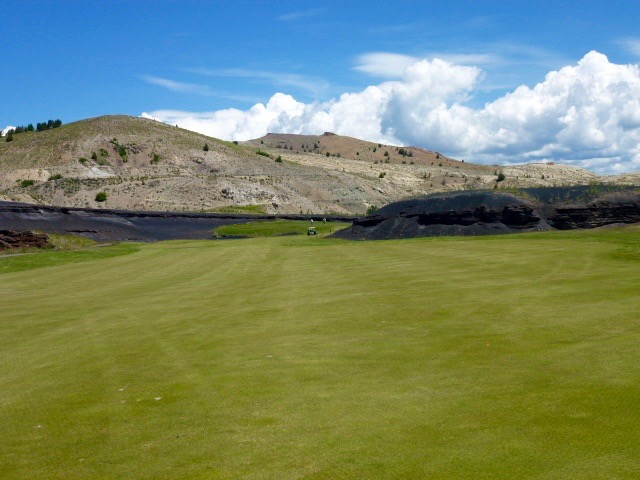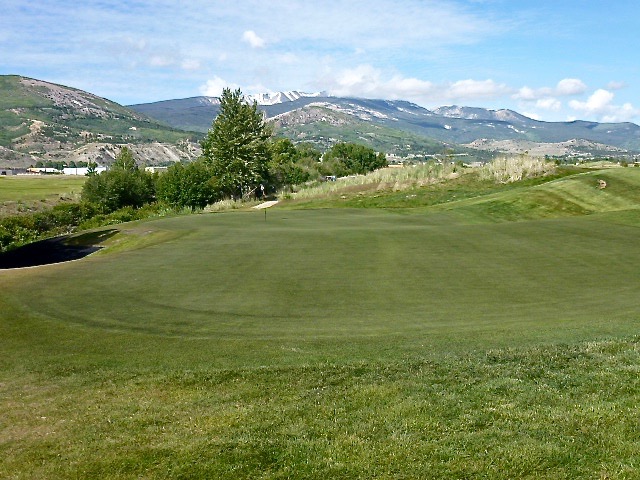Old Works: From the Slagheap of History

On the north side of the property, steep foothills rise covered in rock and crumbling stone. Embedded into the upslope are remnants suggesting some kind of massive structure once towered overhead. The long chains of masonry and block-like pillars draping the mountain give no indication of purpose, but it’s clear this was a place of industry.
The site is the Old Works Golf Course in Montana, but the initial impression is more archeological than sporting. The remains that overlook the course are the last traces of the foundations and footings that upheld the great smelters of the Anaconda Company, which for nearly 100 years processed copper ore mined in Butte, 30 miles down the interstate.

Anaconda closed the mines and furnaces in the early 1980’s, leaving behind a ravished, ecologically devastated landscape that was later declared a Superfund site. The property was eventually capped and sanitized of the toxic leftovers of the smelting process, clearing the way for an innovative repurposing that included a Jack Nicklaus-designed golf course, the first to be built in collaboration with a Superfund cleanup.
I came across on old video from the mid-1990’s that claimed seven of the country’s top design firms interviewed for the Old Works job. I wish I knew who they were, but it was probably a smart move to select Nicklaus Design — hiring an architect with any lesser name would make it more difficult than it already is to attract traveling players to this rural location, and local players can rightfully take pride in having one of the few Nicklaus “signature” courses in the upper Western states.

It would be interesting to see what this course might look like if it were built today. Design aesthetics have evolved in the two decades since Old Works opened and a modern incarnation would likely possess either a far more voluptuous style of shaping or a rougher, naturalistic work playing off the Montana prairie and rocky, Big Sky surrounds.
As it is, Old Works is neither fish nor fowl. While the holes incorporate black slag (the physical smelting byproduct ground down to sand consistency) in the form of bunkers and transition areas, there’s not much connectivity between the design features and the site.

The shaping is ordinary and merely functional with mostly shallow bunkers and modest mounding around the greens. The Nicklaus house style has matured in the last two decades beyond what’s here — moving toward more detailed greenside ground contour and a varied and charismatic bunkering — but the property would also be an ideal backdrop for more muscular features and strong vertical elements given the spartan landscape and industrial queues looming so obviously in the background.
Nicklaus was understandably conscientious of his clientele. Old Works is a public course dependent on area play, and punishing bunkers and green complexes that drove people away would have been a death sentence in this lightly populated part of the country. I still think, however, 21st century Jack would have found ways to make the course more exciting without being overly exacting.

If I were in charge I’d flip the sides. Right now the first nine is the more exhilarating of the two with holes charging uphill toward the mining artifacts, drifting off elevated tees and then attacking upward again. It’s a great use of the topography that plays off the existing landscape, particularly the heaps of dune-like black slag that form the perch for the elevated par-5 6th green and promontory tees of the par-3 7th.
Holes 10 and 11, meanwhile, each require approach shots across Warm Spring Creek, which may be too much to ask handicap players first thing in the morning. But these are the two best holes of the second nine and the following seven don’t inspire that same passion as the 11 holes before them.
Given its backstory and importance to the community, I wanted to love Old Works more than I do. I can’t comment on the challenges of building on a Superfund site or whether that impacted some of the routing and shaping decisions, but I can’t help but feel something more notable was left on the drafting board.
Nonetheless, should you find your clubs traveling through this part of Montana, it’s a no-brainer to stop here for a game, especially if you’re in a position to double it with a round at Tom Doak’s Rock Creek Cattle Club another hour up the road. (87)
Anaconda/Butte
Architect: Jack Nicklaus
Year: 1997
